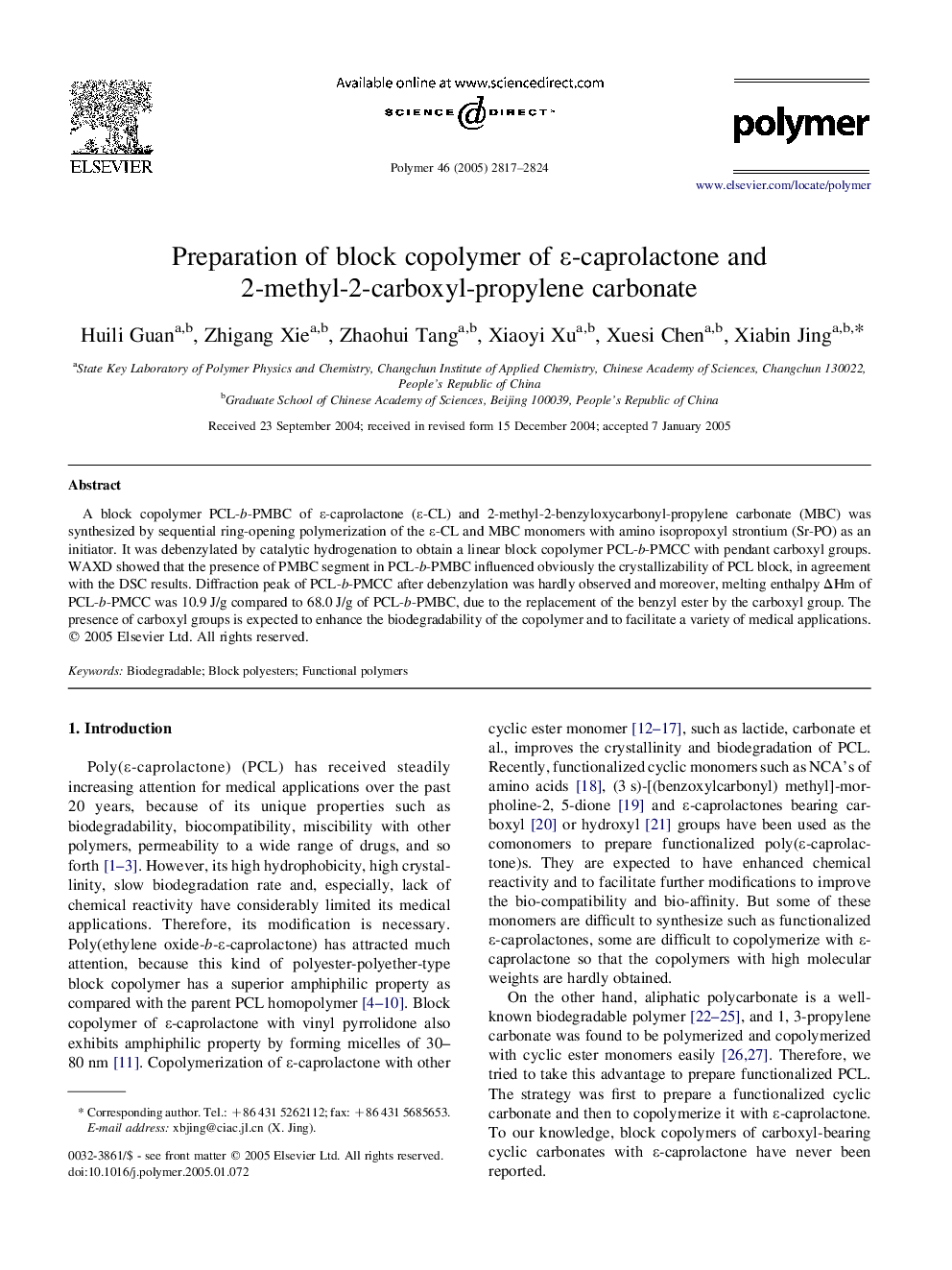| Article ID | Journal | Published Year | Pages | File Type |
|---|---|---|---|---|
| 5191713 | Polymer | 2005 | 8 Pages |
A block copolymer PCL-b-PMBC of É-caprolactone (ε-CL) and 2-methyl-2-benzyloxycarbonyl-propylene carbonate (MBC) was synthesized by sequential ring-opening polymerization of the ε-CL and MBC monomers with amino isopropoxyl strontium (Sr-PO) as an initiator. It was debenzylated by catalytic hydrogenation to obtain a linear block copolymer PCL-b-PMCC with pendant carboxyl groups. WAXD showed that the presence of PMBC segment in PCL-b-PMBC influenced obviously the crystallizability of PCL block, in agreement with the DSC results. Diffraction peak of PCL-b-PMCC after debenzylation was hardly observed and moreover, melting enthalpy ÎHm of PCL-b-PMCC was 10.9 J/g compared to 68.0 J/g of PCL-b-PMBC, due to the replacement of the benzyl ester by the carboxyl group. The presence of carboxyl groups is expected to enhance the biodegradability of the copolymer and to facilitate a variety of medical applications.
